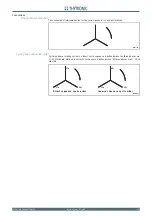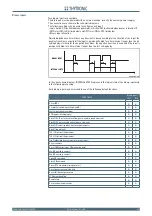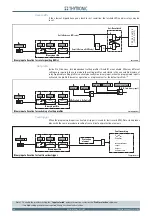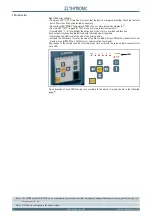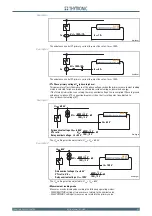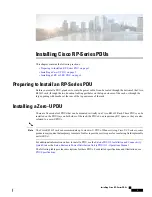
32
32
NC20 - Manual - 01 - 2015
FUNCTION CHARACTERISTICS
Demand
Phase fi xed demand (
I
L1FIX
,
I
L2FIX
,
I
L3FIX
)
Inside an adjustable time interval
t
FIX
, an average magnitude is calculated for phase currents
I
L1
,
I
L2
,
I
L3
, active power ±
P
and reactive power ±
Q
of measures taken every second. The average values are
stored at the end of the same time interval.
Phase rolling demand (
I
L1ROL
,
I
L2ROL
,
I
L3ROL
)
Inside an adjustable time interval
N
ROL
∙
t
ROL
, an average magnitude is calculated for phase currents
I
L1
,
I
L2
,
I
L3
, active power ±
P
and reactive power ±
Q
of measures taken every second, where
t
ROL
is
the length of any time subinterval and
N
ROL
is the number of the time intervals. The average values
are stored at the end of the same time subinterval.
Phase peak (
I
L1MAX
,
I
L2MAX
,
I
L3MAX
)
Inside an adjustable time interval
t
ROL
, the maximum magnitude is calculated for phase currents
I
L1
,
I
L2
,
I
L3
, active power ±
P
and reactive power ±
Q
of measures taken every second. The average values
are stored at the end of the same time interval
t
ROL
(Rolling demand common parameter).
Phase ,inimum (
I
L1MIN
,
I
L2MIN
,
I
L3MIN
)
Inside an adjustable time interval
t
ROL
, the minimum magnitude is calculated for phase currents
I
L1
,
I
L2
,
I
L3
, active power ±
P
and reactive power ±
Q
of measures taken every second. The average values
are stored at the end of the same time interval
t
ROL
(Rolling demand common parameter).
•
•
•
•
F i x - D e m a n d . a i
1 s
I
L1F I X
,
I
L 2 F I X
,
I
L 3 F I X
t
F I X
(
I
n
)
I
L2
I
L1
I
L3
I
L x F I X
I
L x n
t
F I X
∙ 60
t
F I X
∙ 60
n=1
¥
1
t
F I X
t
F I X
t
F I X
F i x - D e m a n d . a i
1 s
I
L1F I X
,
I
L 2 F I X
,
I
L 3 F I X
t
F I X
(
I
n
)
I
L2
I
L1
I
L3
I
L x F I X
I
L x n
t
F I X
∙ 60
t
F I X
∙ 60
n=1
¥
1
t
F I X
t
F I X
t
F I X
Rol-Demand.ai
Rolling demand example with
N
ROL=4
I
L1ROL
I
L 2 ROL
I
L 3 ROL
(
I
n
)
I
L2
I
L1
I
L3
0
1
2
3
4
5
1 s
t
ROL
t
ROL
N
ROL
t
ROL
t
ROL
t
ROL
6
t
ROL
Average inside subinterval
t
ROL
I
L x ROL
=
I
L x k
t
ROL
∙60
t
R OL
∙60
k=1
¥
N
R OL
n=1 n
¥
1
N
ROL
1
Rol-Demand.ai
Rolling demand example with
N
ROL=4
I
L1ROL
I
L 2 ROL
I
L 3 ROL
(
I
n
)
I
L2
I
L1
I
L3
0
1
2
3
4
5
1 s
t
ROL
t
ROL
N
ROL
t
ROL
t
ROL
t
ROL
6
t
ROL
Average inside subinterval
t
ROL
I
L x ROL
=
I
L x k
t
ROL
∙60
t
R OL
∙60
k=1
¥
N
R OL
n=1 n
¥
1
N
ROL
1
Max-Demand.ai
Maximum value of averages inside time interval
t
ROL
Average inside time interval
t
ROL
I
L1MA X
I
L 2 MA X
I
L 3 MA X
(
I
n
)
I
L2
I
L1
I
L3
1 s
t
ROL
t
ROL
t
ROL
t
ROL
t
ROL
t
ROL
MAX
I
L x MA X
=
I
L x n
t
ROL
∙60
t
R OL
∙60
n=1
¥
1
Max-Demand.ai
Maximum value of averages inside time interval
t
ROL
Average inside time interval
t
ROL
I
L1MA X
I
L 2 MA X
I
L 3 MA X
(
I
n
)
I
L2
I
L1
I
L3
1 s
t
ROL
t
ROL
t
ROL
t
ROL
t
ROL
t
ROL
MAX
I
L x MA X
=
I
L x n
t
ROL
∙60
t
R OL
∙60
n=1
¥
1
Min-Demand.ai
Minimum value of averaged inside time interval
t
ROL
Average inside time interval
t
ROL
Reset
I
L1MIN
I
L 2 MIN
I
L 3 MIN
(
I
n
)
I
L2
I
L1
I
L3
1 s
t
ROL
t
ROL
t
ROL
t
ROL
t
ROL
t
ROL
MIN
I
L x MIN
=
I
L x n
t
ROL
∙60
t
R OL
∙60
n=1
¥
1
Min-Demand.ai
Minimum value of averaged inside time interval
t
ROL
Average inside time interval
t
ROL
Reset
I
L1MIN
I
L 2 MIN
I
L 3 MIN
(
I
n
)
I
L2
I
L1
I
L3
1 s
t
ROL
t
ROL
t
ROL
t
ROL
t
ROL
t
ROL
MIN
I
L x MIN
=
I
L x n
t
ROL
∙60
t
R OL
∙60
n=1
¥
1
















